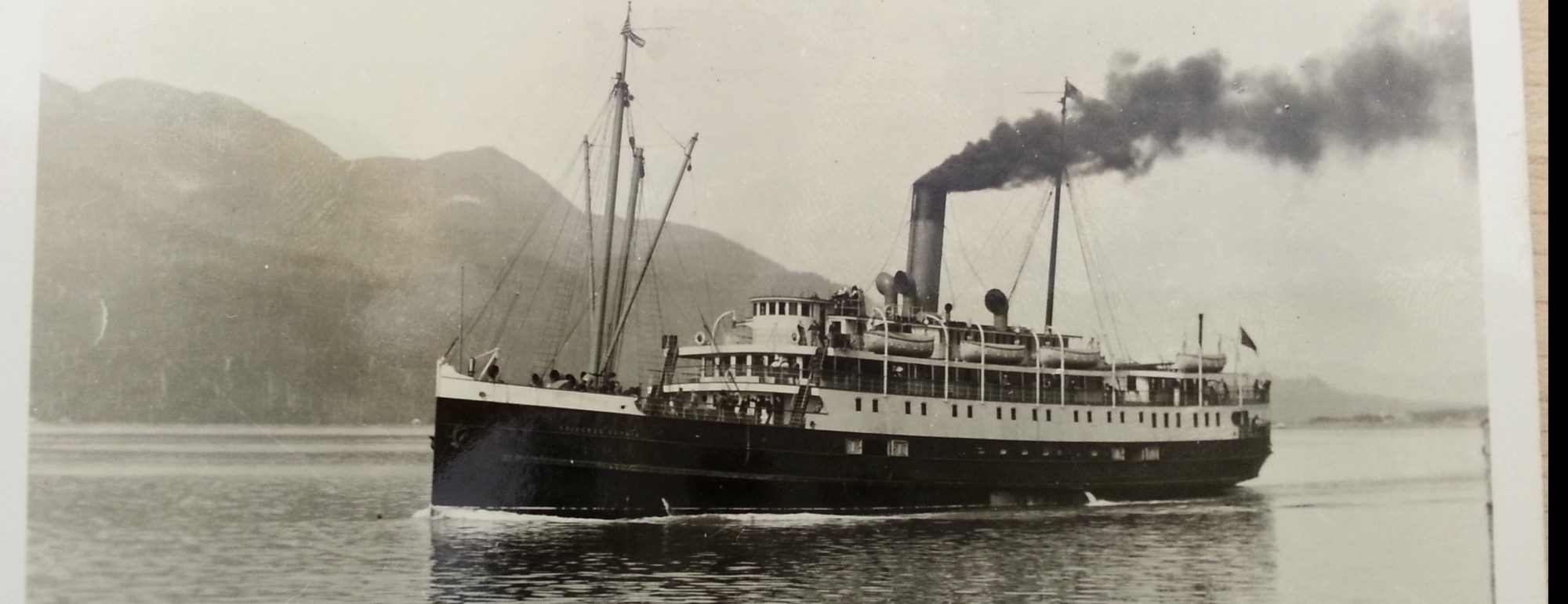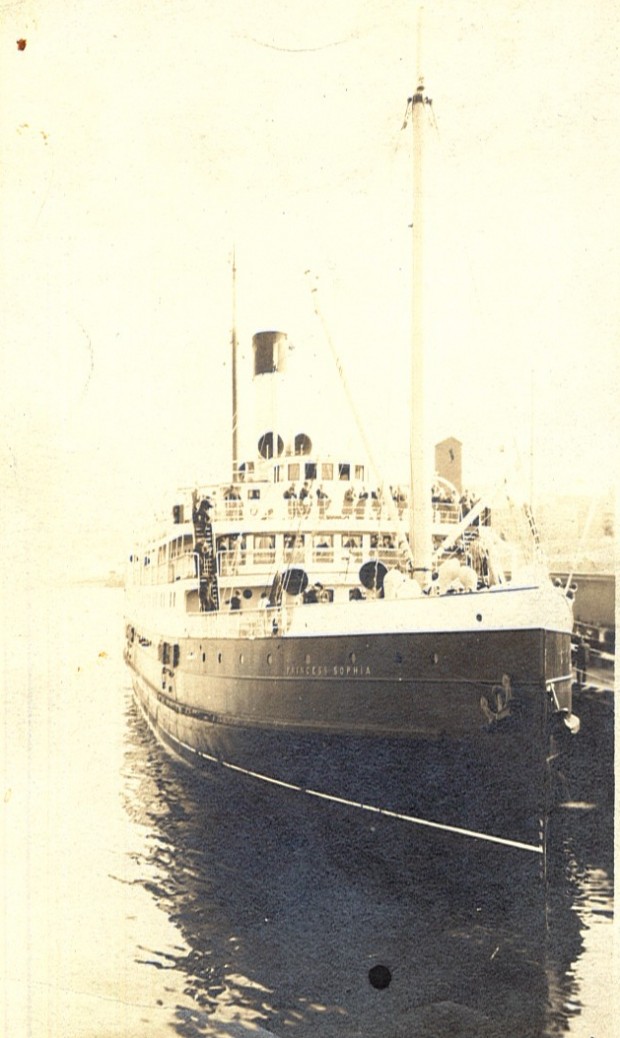The S.S. Sophia
The Princess Sophia was built as part of a series of the “Princess Fleet” that was acquired by the CPR in the years preceding the Great War. The acquired ships were as follows:
-
Princess Adelaide
-
Princess Mary
-
Princess Alice
-
Princess Sophia
-
Princess Maquinna
-
Princess Patricia1
The sister ships were solidly built and well appointed coastal steamers designed for carrying both passengers and freight to isolated settlements served by the CPR’s steamships.2 The Sophia was the largest of the fleet, specially designed to travel two routes: Vancouver to Prince Rupert, and Vancouver to Skagway, Alaska. The Princess Alice was the first ship to be converted from being powered by coal to being powered by oil, and the rest of the boats in the Princess fleet followed soon after. The Princess Sophia was assigned to travel mainly from Victoria to Prince Rupert, but the following summer, in 1913, it was assigned a new route. Once every two weeks, it would travel to Skagway as a passenger ship.3 This would be the last route that the Sophia would ever follow.
The Princess Sophia was bought by the CPR from Bow, McLachlan & Company in May 1912. She had a length of 245ft, a breadth of 44ft, and a gross weight of 2320 tonnes. She was a steel, single screw steamer with a double hull and a triple-expansion engine, and she could reach maximum speeds of 14.5 knots. She was chunky but had pleasant enough accommodations, with room for 166 first class passengers and 84 second class passengers, and she soon became very popular. Built in 1911at the dockyards in Paisley, Scotland, the Princess Sophia proved to be a heavy enough ship to withstand the stormy weather on the west coast of Vancouver Island while still being able to navigate narrow passages.4 Given that collision with a reef is what would bring about the Sophia’s demise, it is perhaps a dark precursor that she was built with a double hull, a feature meant to allow ships to withstand such impacts.
The night of the sinking, Captain Locke was given the choice to either have all the passengers evacuate on the life boats and attempt to reach the Cedar in the dark weather, or have everyone remain on board and hope for the storm to pass sooner rather than later. Locke was influenced by the previous wreck of the Clallam in 1904; Captain George Roberts of the Clallam made the decision to evacuate as many women and children into the lifeboats as possible, but all fifty-four evacuated passengers ended up drowning due to either a failure to launch or the boats capsizing when they landed in the water. The Clallam remained afloat long enough for the remaining passengers to be rescued. This situation would cause Captain Locke to question his own decisions. Should he place women and children in the life boats and hope that they reach the rescue ships, or would they be safer onboard the Sophia?
Would the decision eventually lead Captain Locke to be held for negligence during the Court Trial?
The Princess Sophia initially carried large contingents from Victoria to the Mainland during and before the Great War. Apart from this thought, the Princess carried on as usual. After the events of October 24th-26th, there was little to no peril on the other ships of the Princess fleet.5
Continue here to find out what happened the night of the sinking.
1.Robert Goerge, The Pacific Princesses, (Victoria: Sono Nis Press 1977) 94. ↩
2. Ibid. 97.↩
3. Ibid. 99.↩
4. Ibid. 94.↩
5. Ibid. 98.↩

